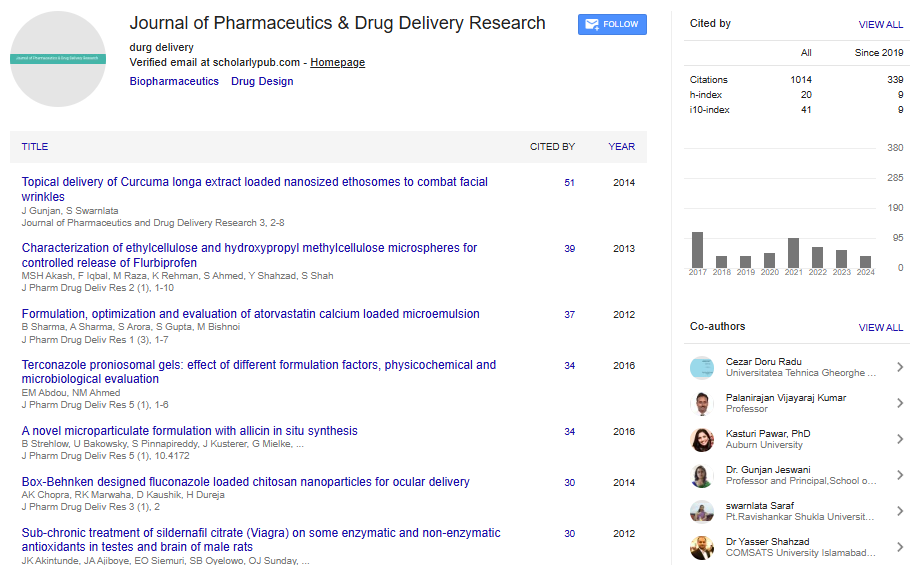HCV detection via magnetic nanoparticles: Past, present and future perspective
Muhammad Ali A Shah
PMAS Arid Agriculture University, Pakistan
: J Pharm Drug Deliv Res
Abstract
Hepatitis C Virus (HCV) infects approximately 3% of world’s population and more than 50% of people are at high risk. . Even after 25 years of its discovery, no specific treatment or vaccination is available. Moreover, current diagnostic tests are not efficient enough to be used proficiently. Considering to mutational properties HCV has number of quasispecies that must be addressed for effective dealing. Moreover these genomic level changes may impede conventional diagnostic method results. There is need for an orderly, sensitive, cost effective and quick method for screening of HCV. Fortunately, diverse, innovative and charismatic nanotechnology field provides an opportunity to develop such ideal diagnostic tools. Magnetic nanoparticles (MNP) are one of the cheapest and promising nanotechnology tools that have the potential to detect and isolate HCV. Their functional methodology is based on the attachment of virus or its constituent to the ligand conjugated with MNP. When MNP are attracted in a magnetic field, the whole complex can be isolated. The present exploration summarizes the internal structure of HCV virus, available nanotechnologies for detection of different viruses with special reference to magnetic nanoparticles role in HCV detection
Biography
Hepatitis C Virus (HCV) infects approximately 3% of world’s population and more than 50% of people are at high risk. . Even after 25 years of its discovery, no specific treatment or vaccination is available. Moreover, current diagnostic tests are not efficient enough to be used proficiently. Considering to mutational properties HCV has number of quasispecies that must be addressed for effective dealing. Moreover these genomic level changes may impede conventional diagnostic method results. There is need for an orderly, sensitive, cost effective and quick method for screening of HCV. Fortunately, diverse, innovative and charismatic nanotechnology field provides an opportunity to develop such ideal diagnostic tools. Magnetic nanoparticles (MNP) are one of the cheapest and promising nanotechnology tools that have the potential to detect and isolate HCV. Their functional methodology is based on the attachment of virus or its constituent to the ligand conjugated with MNP. When MNP are attracted in a magnetic field, the whole complex can be isolated. The present exploration summarizes the internal structure of HCV virus, available nanotechnologies for detection of different viruses with special reference to magnetic nanoparticles role in HCV detection.
alishah521@gmail.com Spanish
Spanish  Chinese
Chinese  Russian
Russian  German
German  French
French  Japanese
Japanese  Portuguese
Portuguese  Hindi
Hindi 
